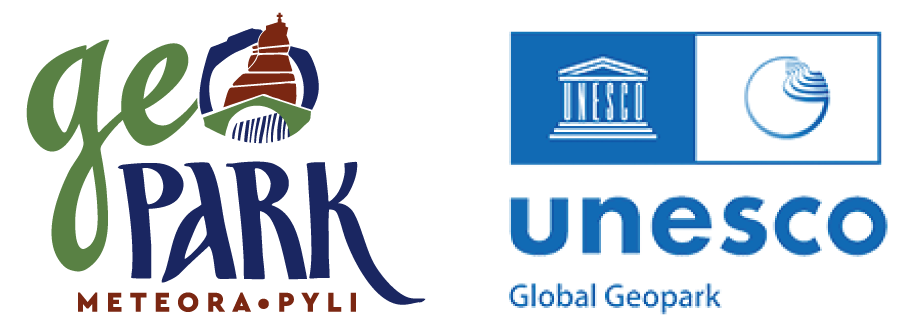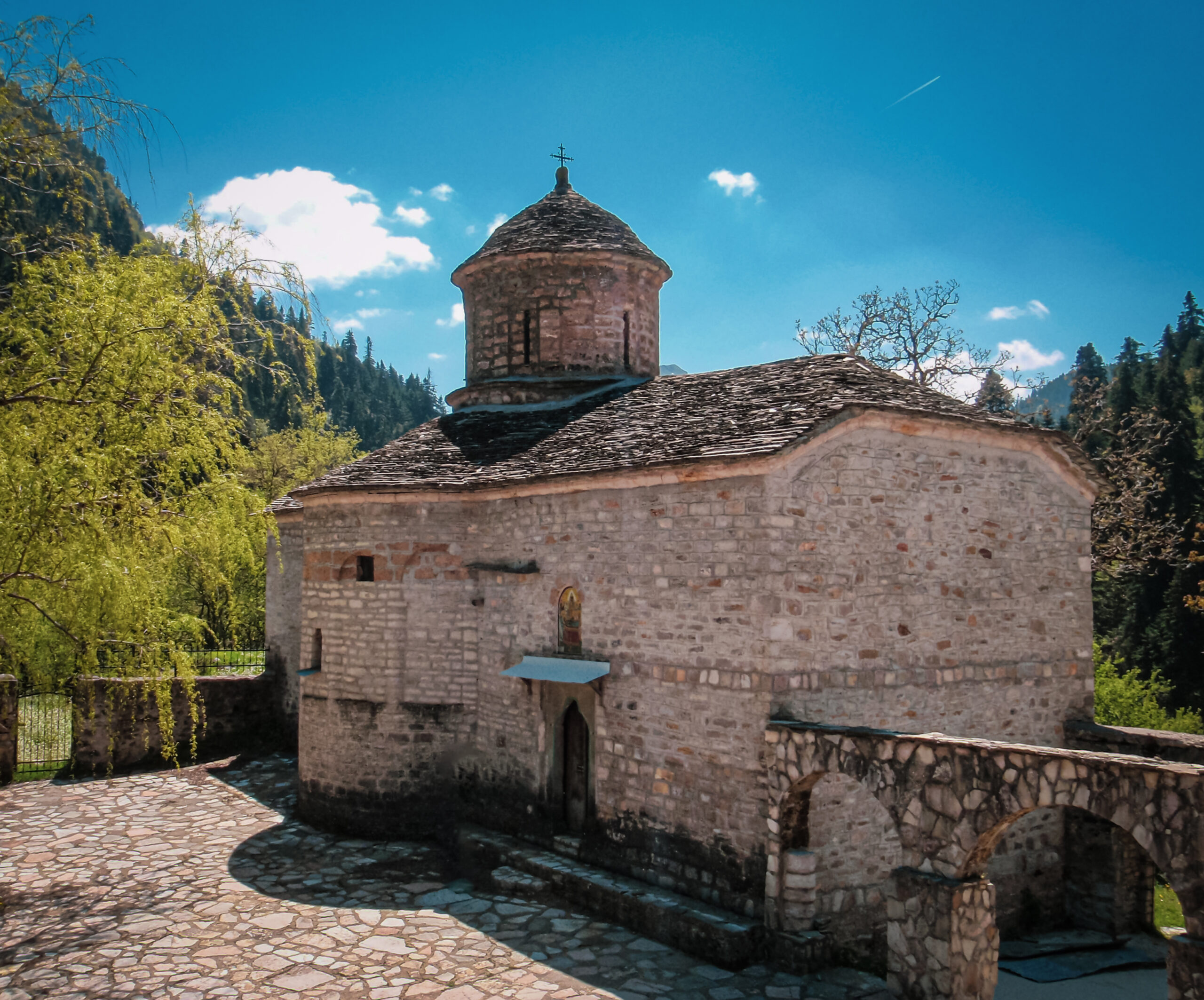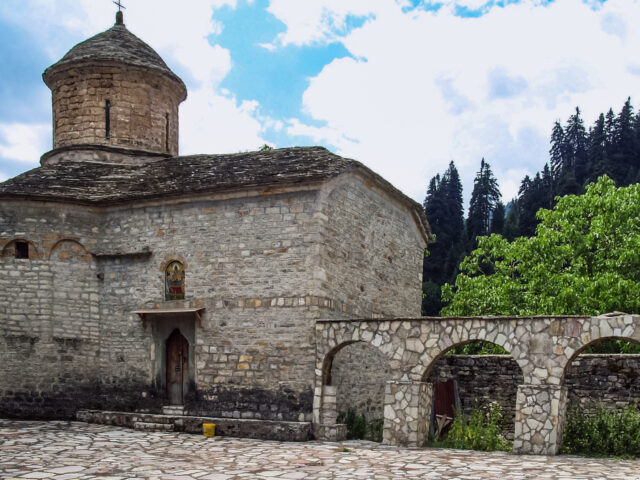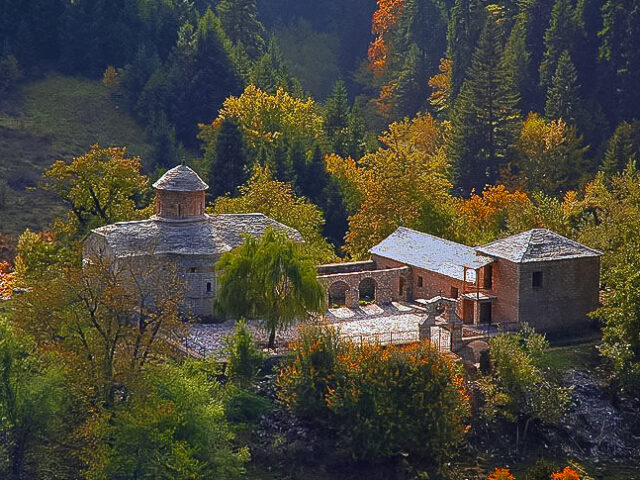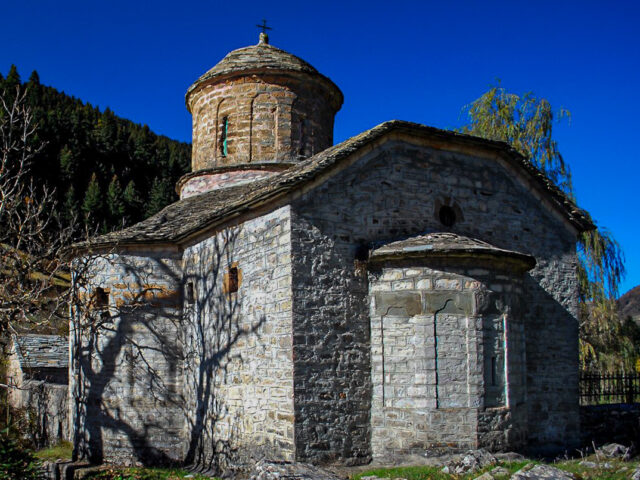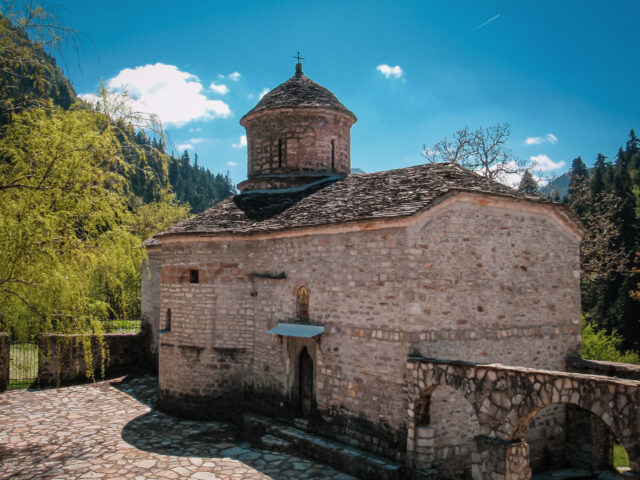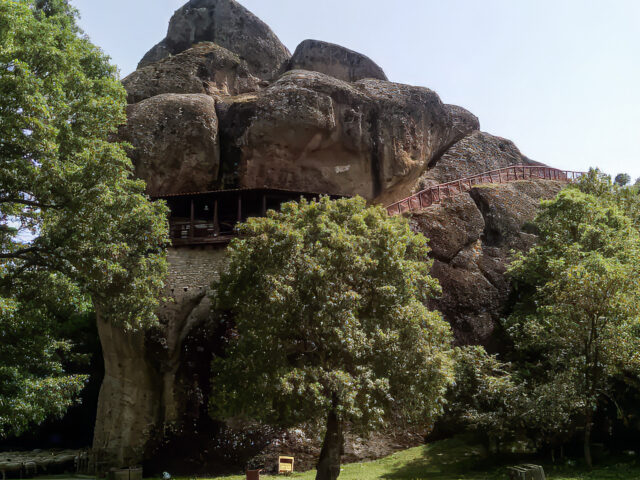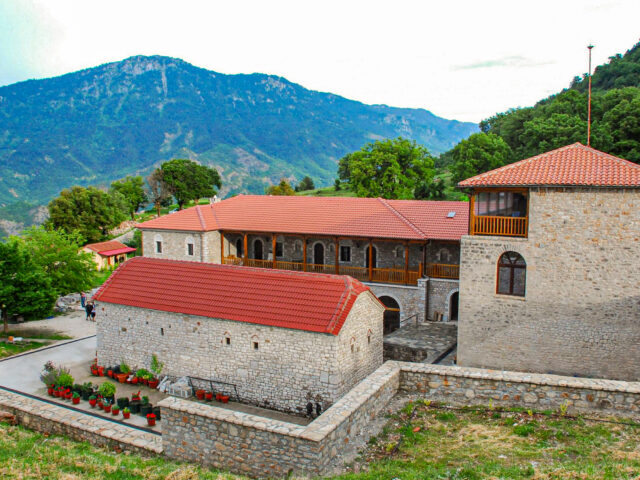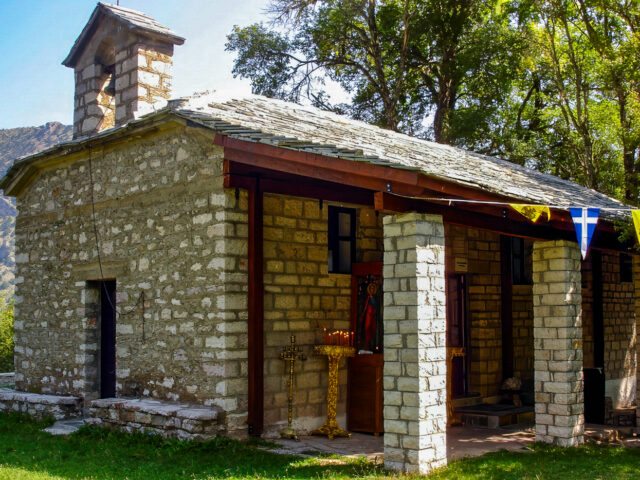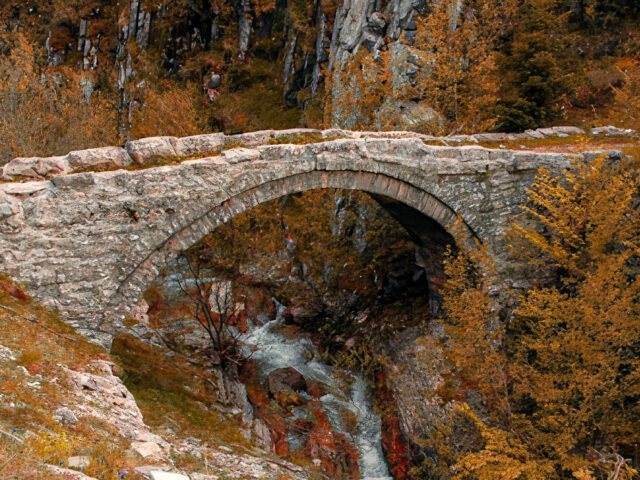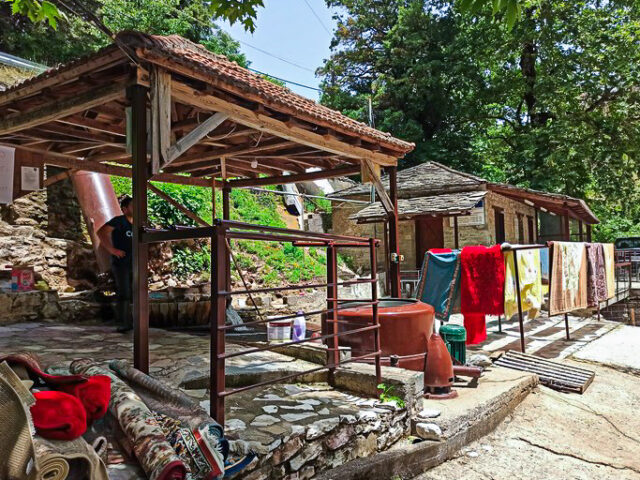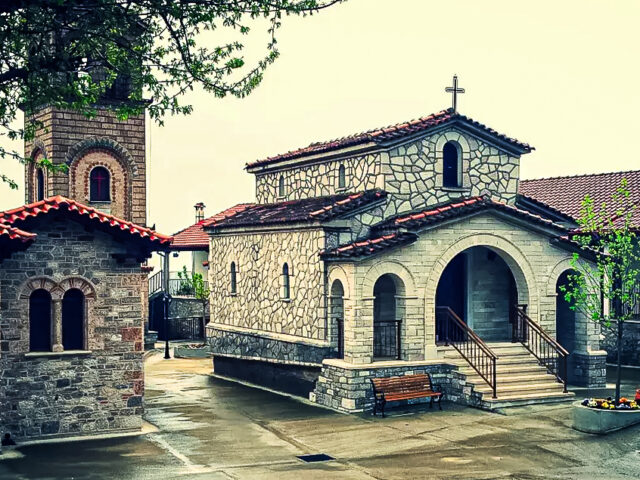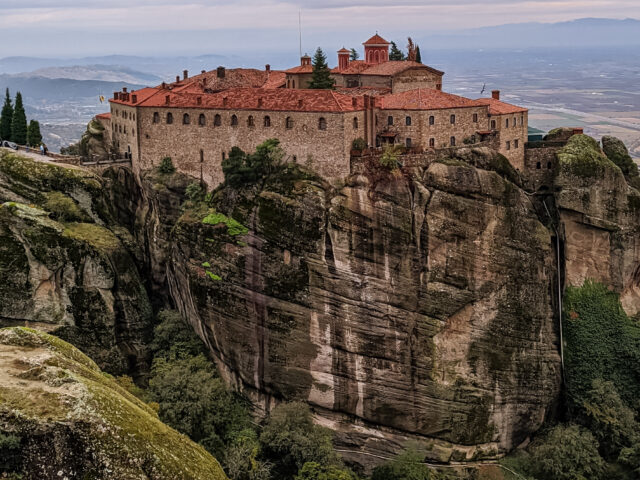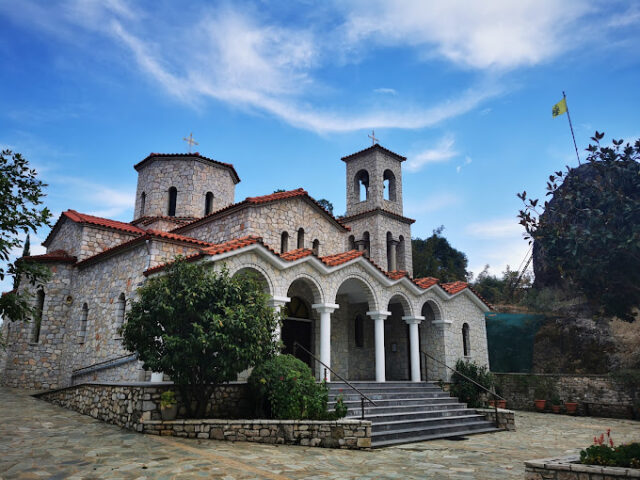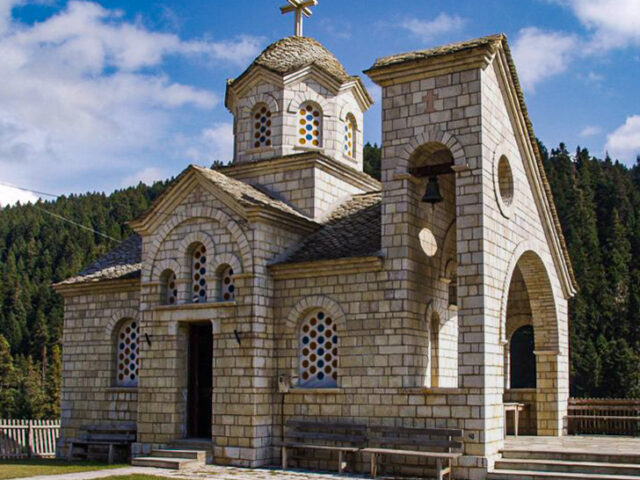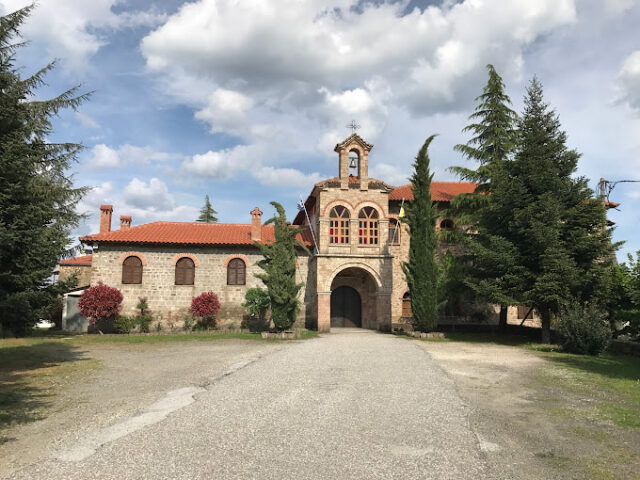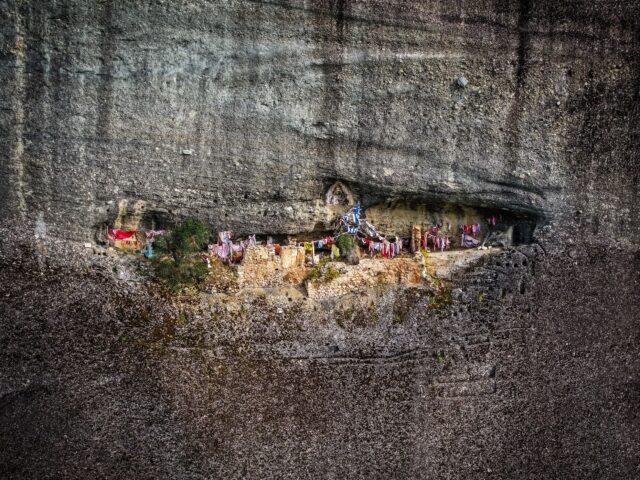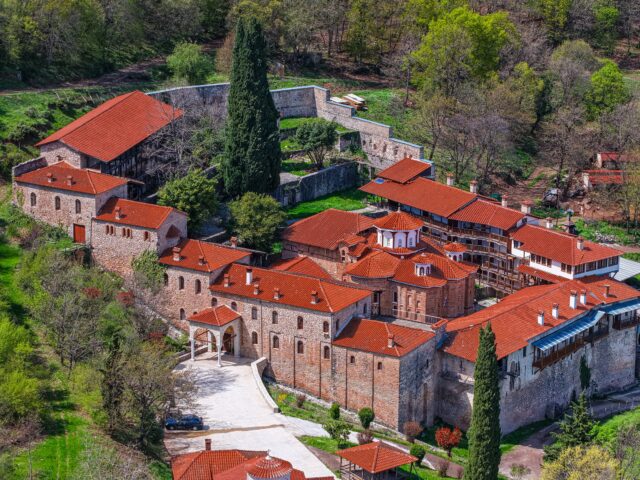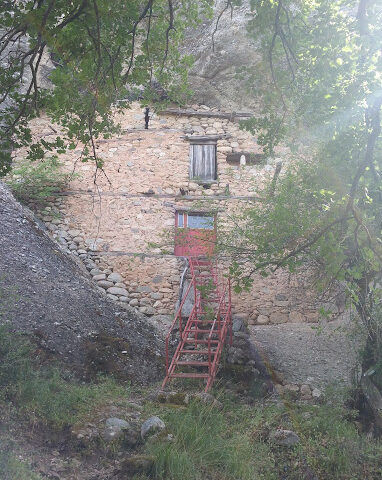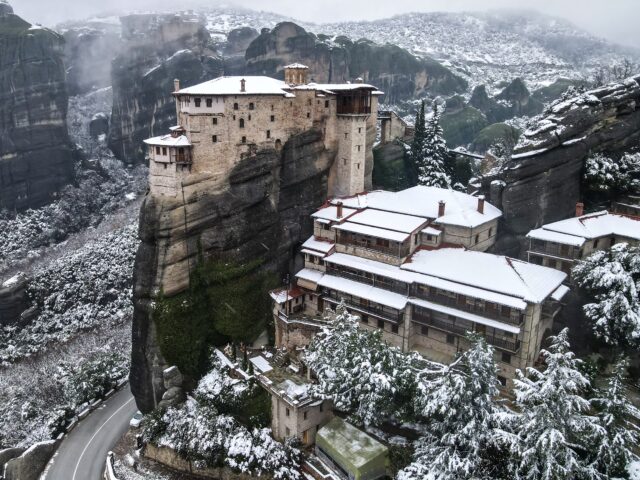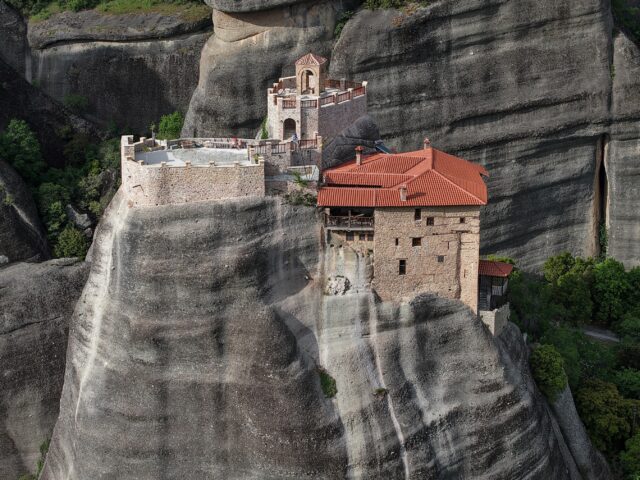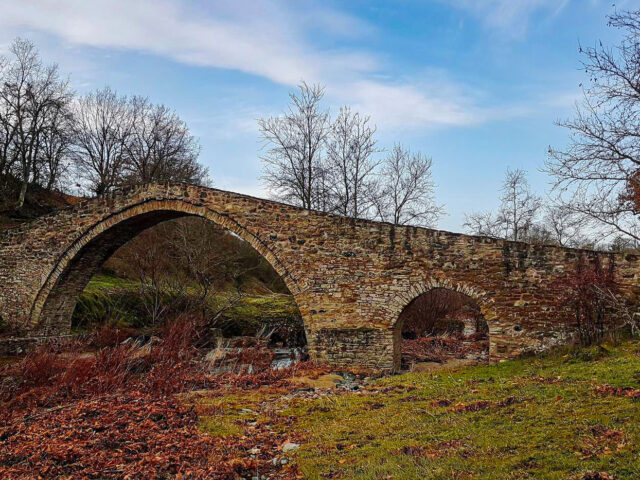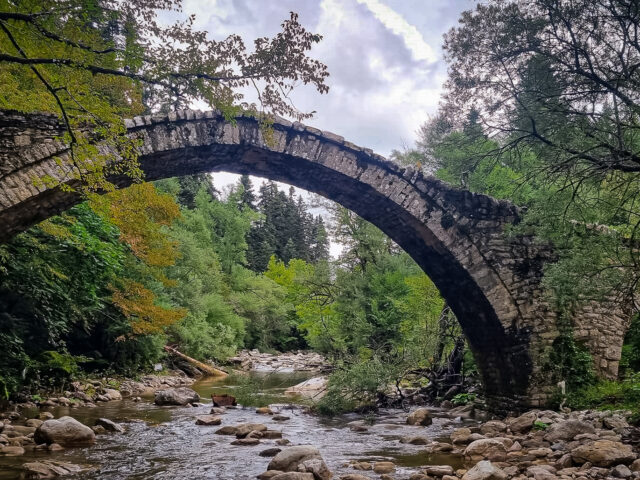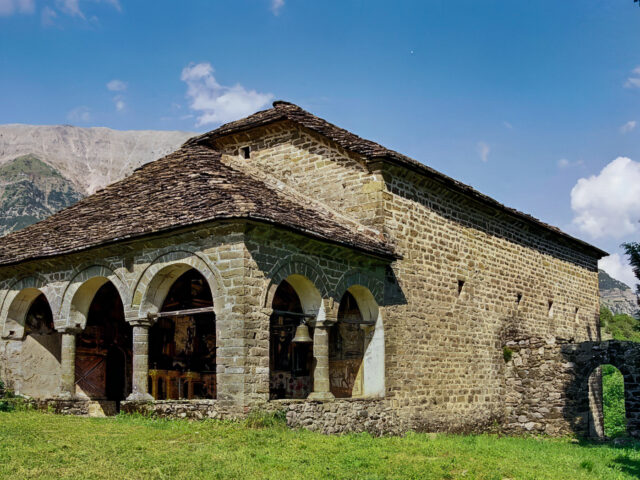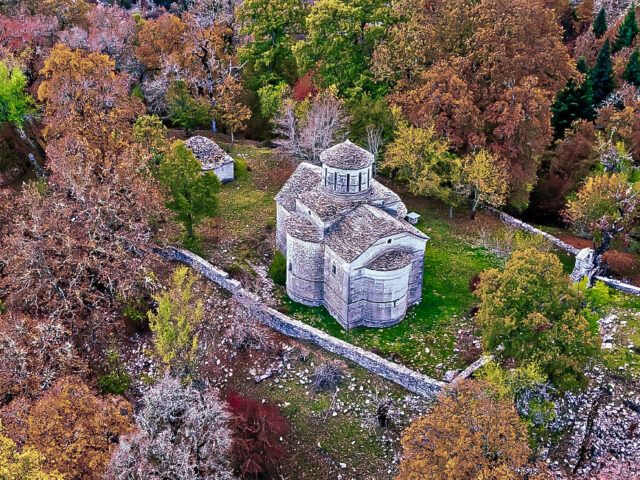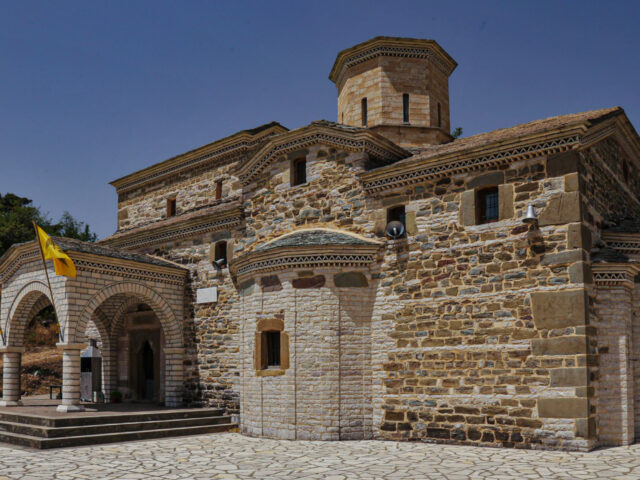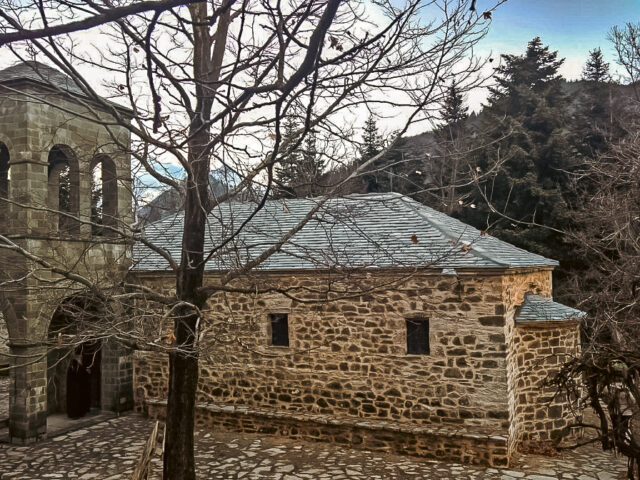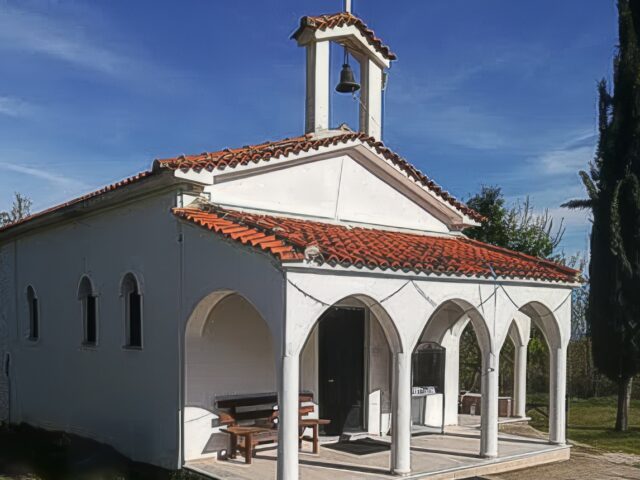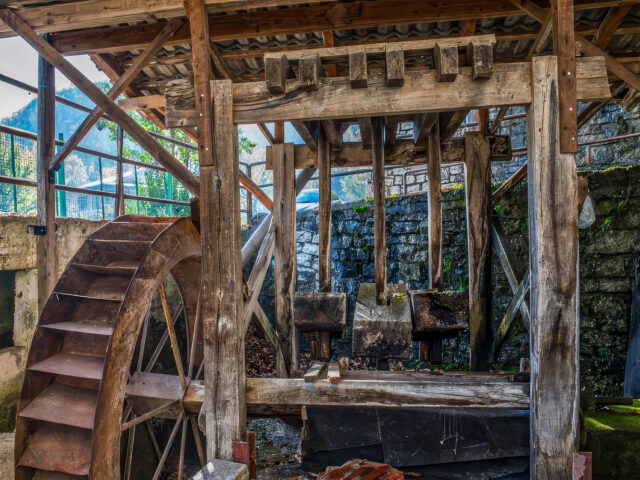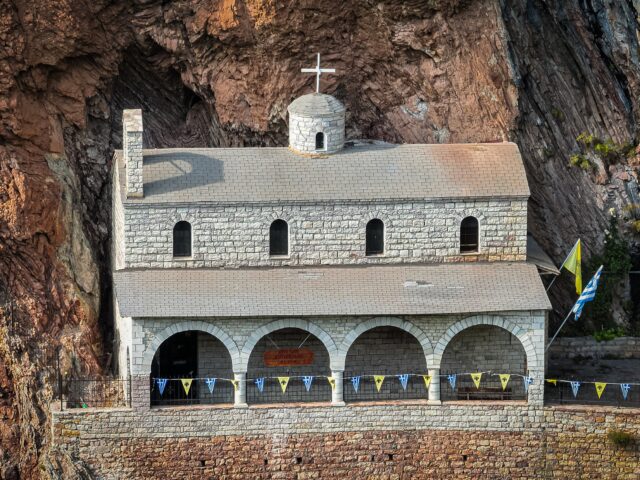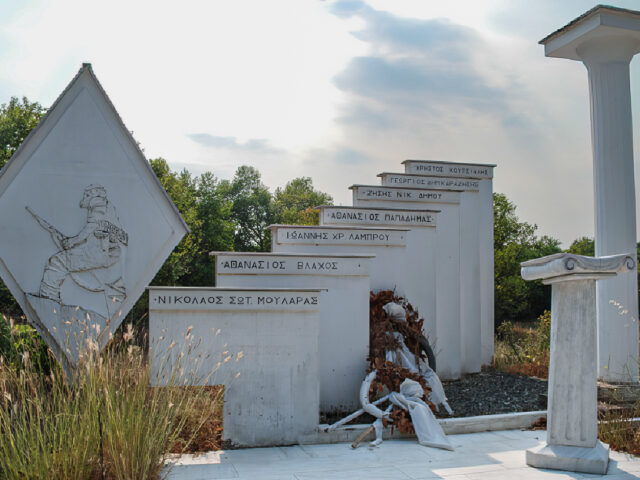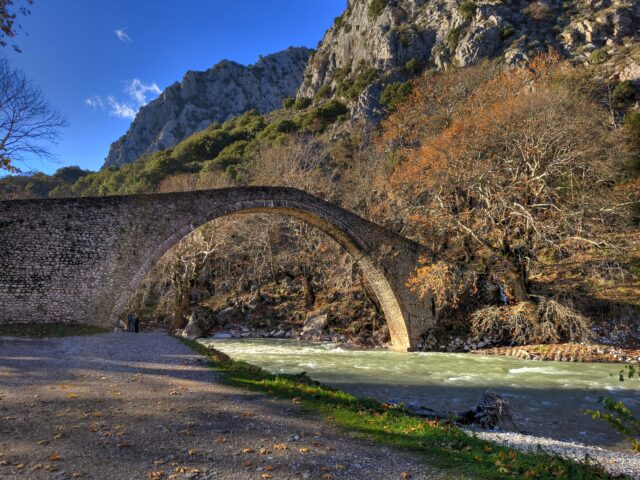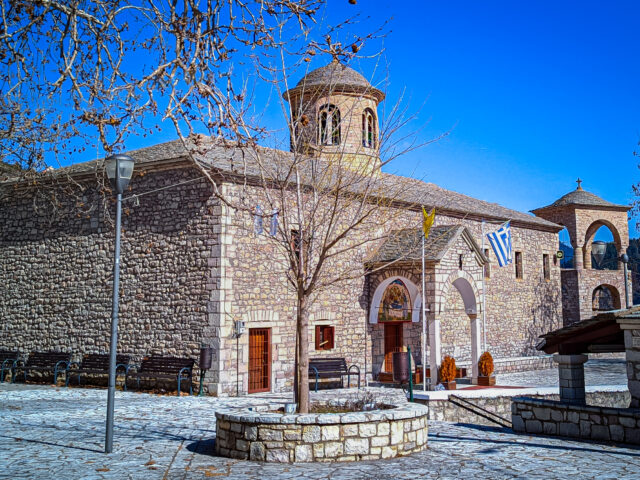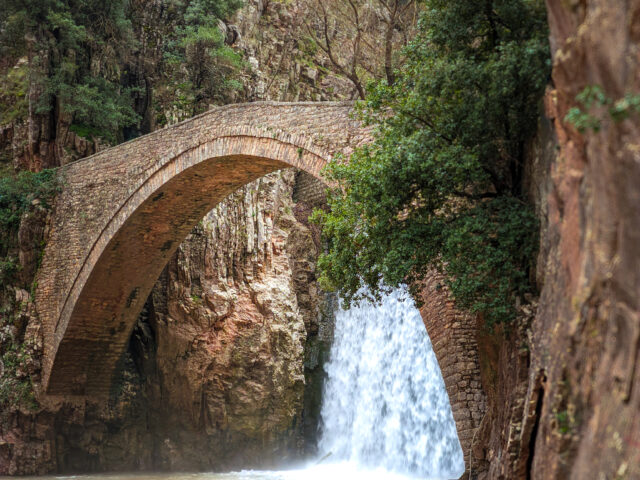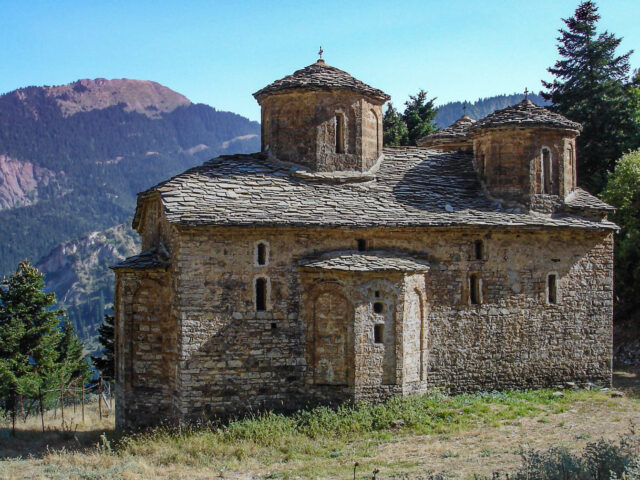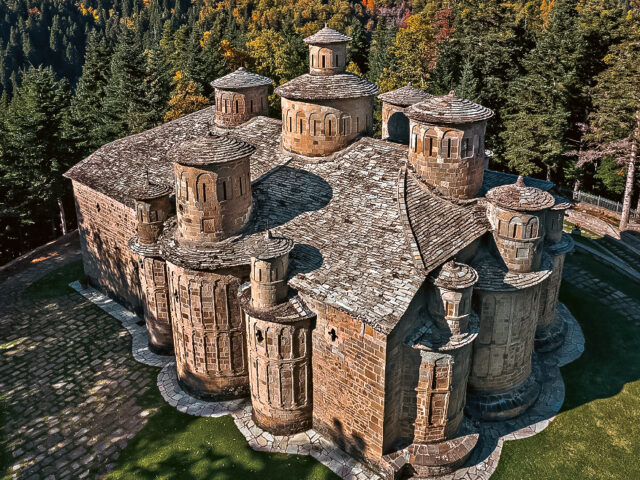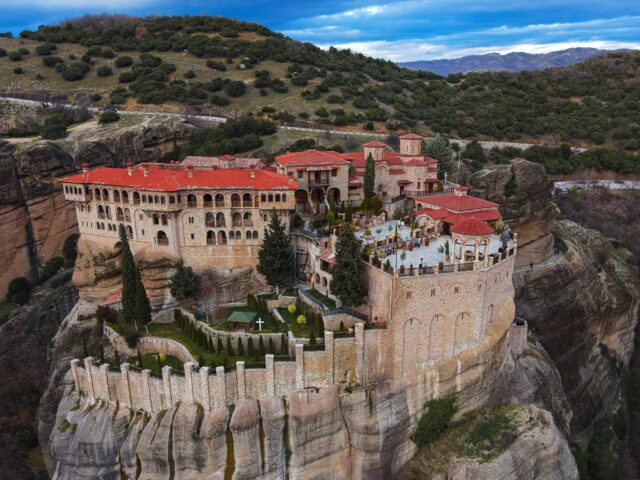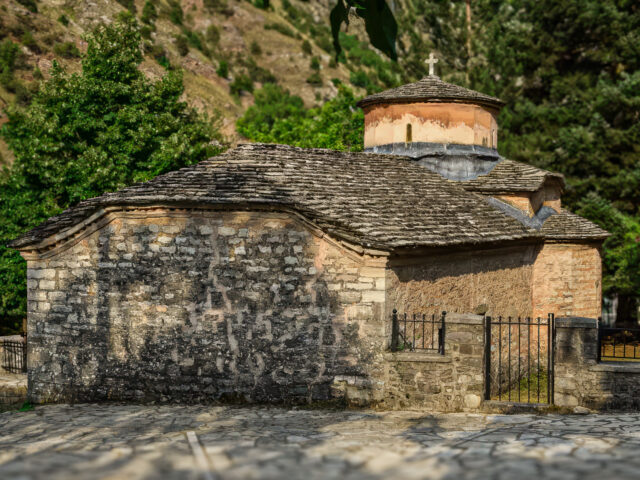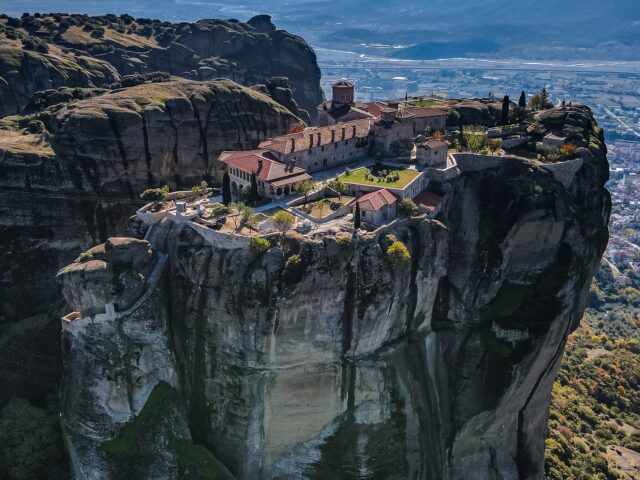Holy Monastery of the Virgin Mary Galaktotrophousa of Anthousa
Address
Anthousa 420 32
GPS
39.649621425922, 21.205394268036
The Monastery of the Galaktotrophousa Virgin Mary is built in a magnificent location near the village of Anthousa, surrounded by a dense fir forest. Approximately half a kilometer to the north, near the Acheloos River, stands an elegant stone arch bridge, which historically connected Thessaly to Epirus via the Baros Pass.
The katholikon (main church) of the monastery was founded in 1799 and completed within just three months. Its founder was the hieromonk Iakovos, who is mentioned as abbot in the years 1810 and 1829. Tragically, the monastery was destroyed in 1943 by German troops. During this attack, the revered icon of the Galaktotrophousa Virgin Mary—an offering made in 1788 by Dimitrios Tourtouris from Kalarrites—was also burned. The chapel of Saint John the Baptist, honored annually on August 29th (the feast of the Beheading of the Forerunner), was likewise destroyed.
Today, aside from two newer buildings on the western side, only the katholikon survives. This elegant stone structure features a four-pitched roof covered with stone slabs, a central dome, and two Athonite-style choirs. Architecturally, it is a single-aisled basilica with a semi-cylindrical vaulted roof. Traces of the original frescoes are still visible.
The northern stone entrance is notable for its intricate relief carvings, including representations of the Holy Trinity, the Annunciation of the Virgin Mary, two double-headed eagles, angels, and flower vases. Additionally, in the exterior eastern niche, one can observe faded yet vivid depictions of the Virgin Mary, Christ, trees, doves, snakes, flowers, and other symbolic motifs.
